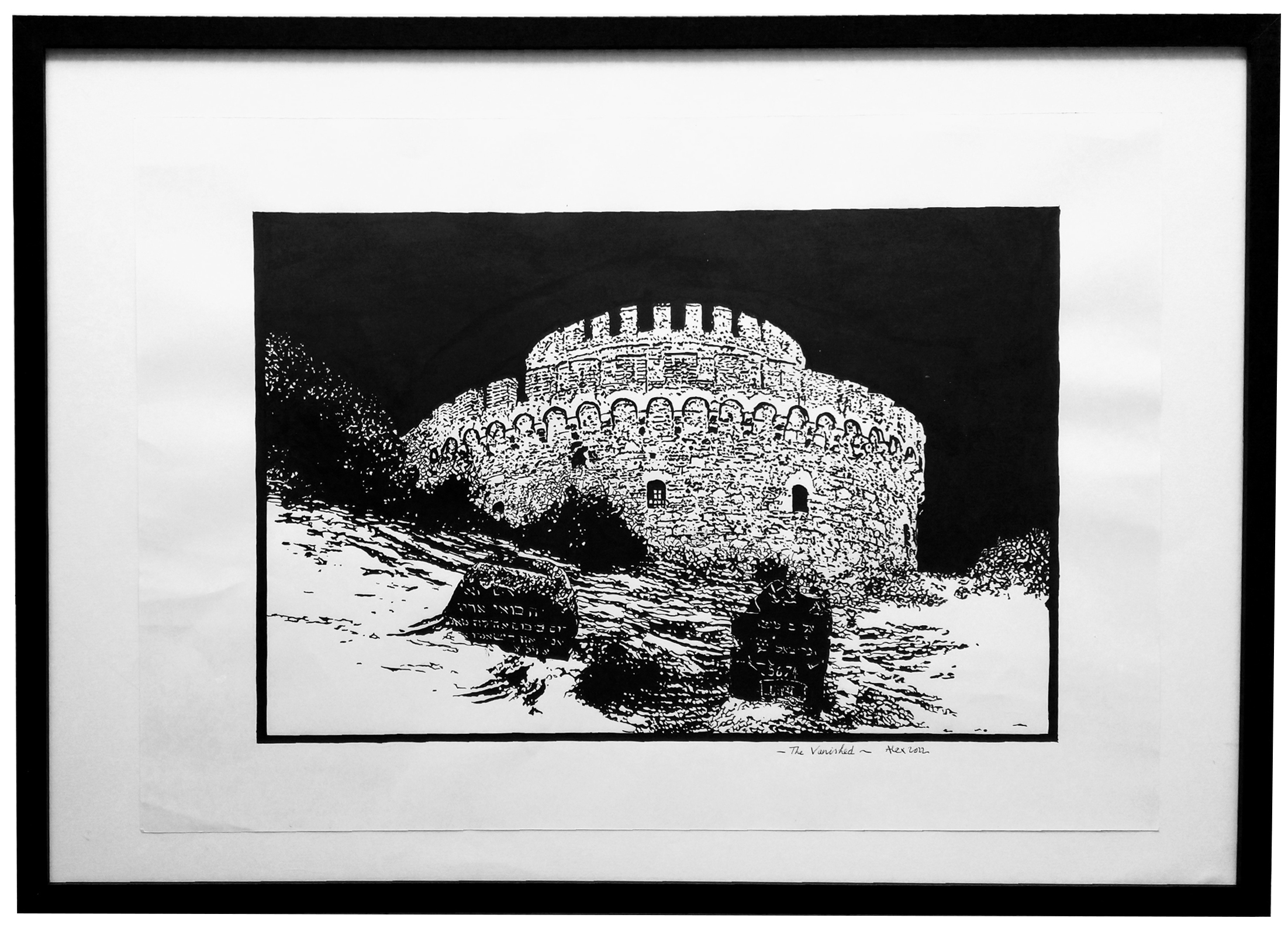“The Vanished”, Alexandre Mitchell, 2022
(Canson 180g, 42 x 59cm, Indian ink)
Here is the White Tower, the emblem of Thessaloniki submerged by a flood of guilt, while Jewish tombstones emerge from the depths of its past.
Thessaloniki was once affectionately known as the Madre de Israel, as its Jewish community represented half of the total population before World War II. It was a cosmopolitan community, made up of all strands of Judaism, whose presence in the city can be traced back almost 2,000 years.
The Jewish population was so large that it took the Nazis six months to deport them all to the extermination camps in Poland. When the few survivors returned, their homes had been sold to local Greeks or poor immigrants from Asia Minor.
A few years later, under the dictatorship of the colonels, the Jewish cemeteries were completely demolished and turned into quarries. Indeed, the city’s university is founded on the largest of the Jewish cemeteries. Despite a few symbolic gestures, the silence surrounding the disappearance of the Jewish population is almost as deafening today as it was in the post-war period.
Further reading
- Christides, G., ‘Thessaloniki Strives to Revive Its Jewish Past, but Encounters a New Form of anti-Semitism’, Haaretz 16/11/2014 | Online
- ‘The Forgotten History of the Jews in Thessaloniki’, Athens Insider 29/01/2021 | online
- Hesse, C., & Laqueur, T., ‘Bodies Visible and Invisible: The Erasure of the Jewish Cemetery in the Life of Modern Thessaloniki’, in G. Antoniou & A. Moses (Eds.), The Holocaust in Greece, Cambridge: Cambridge University Press, 2018, pp. 327-358.
- Jones, S., ‘Thessaloniki’s Jews: ‘We can’t let this be forgotten; if it’s forgotten, it will die’, The Guardian, 30/07/2020 | Online
- Mazower, M., Salonica, city of Ghosts. Christians, Muslims and Jews, 1430-1950, 2004 | NY Times Book review
Resources
- History of Jews in Thessaloniki | Wikipedia | Holocaust Encyclopedia | Jewish Virtual Library
- White Tower of Thessaloniki | official website | Wikipedia




